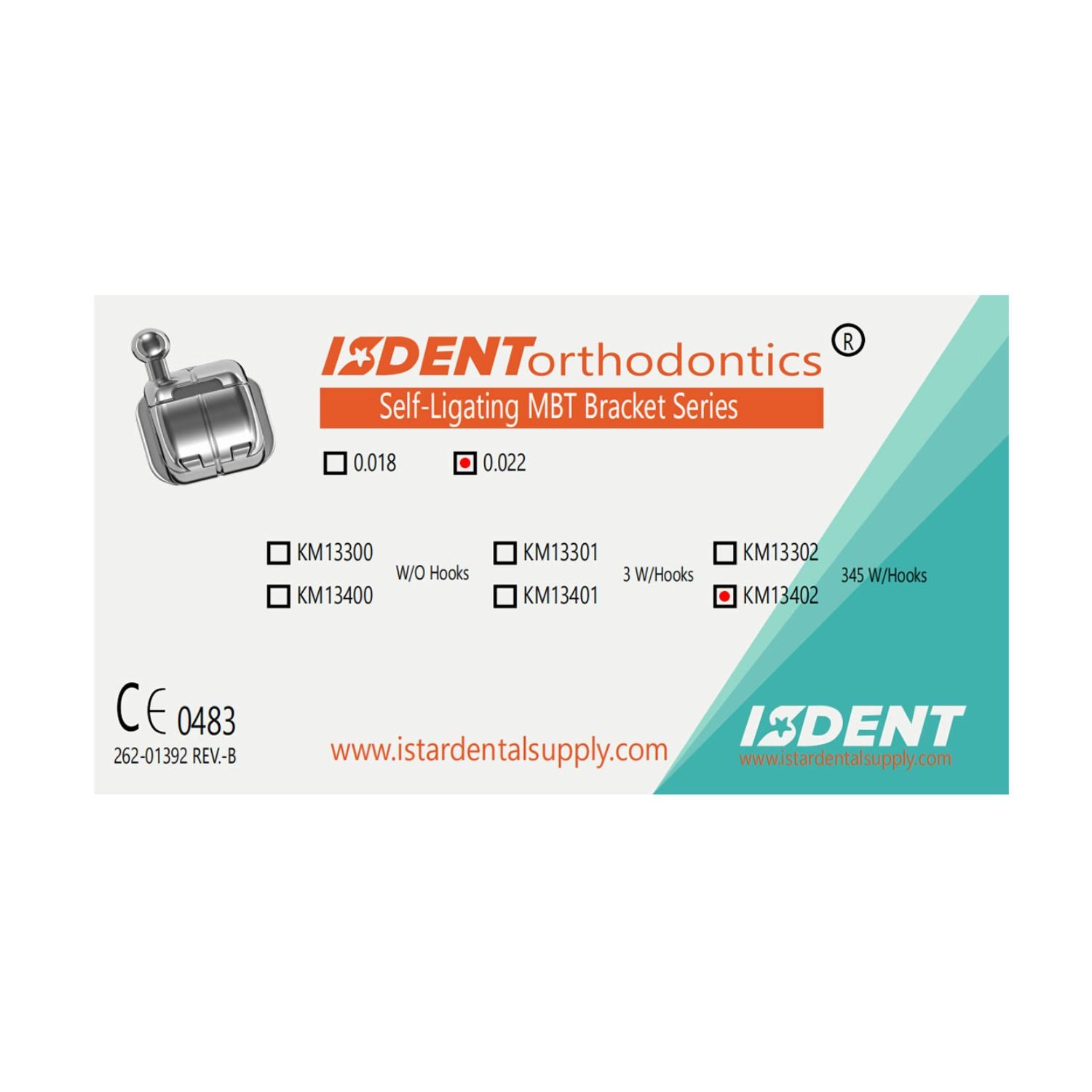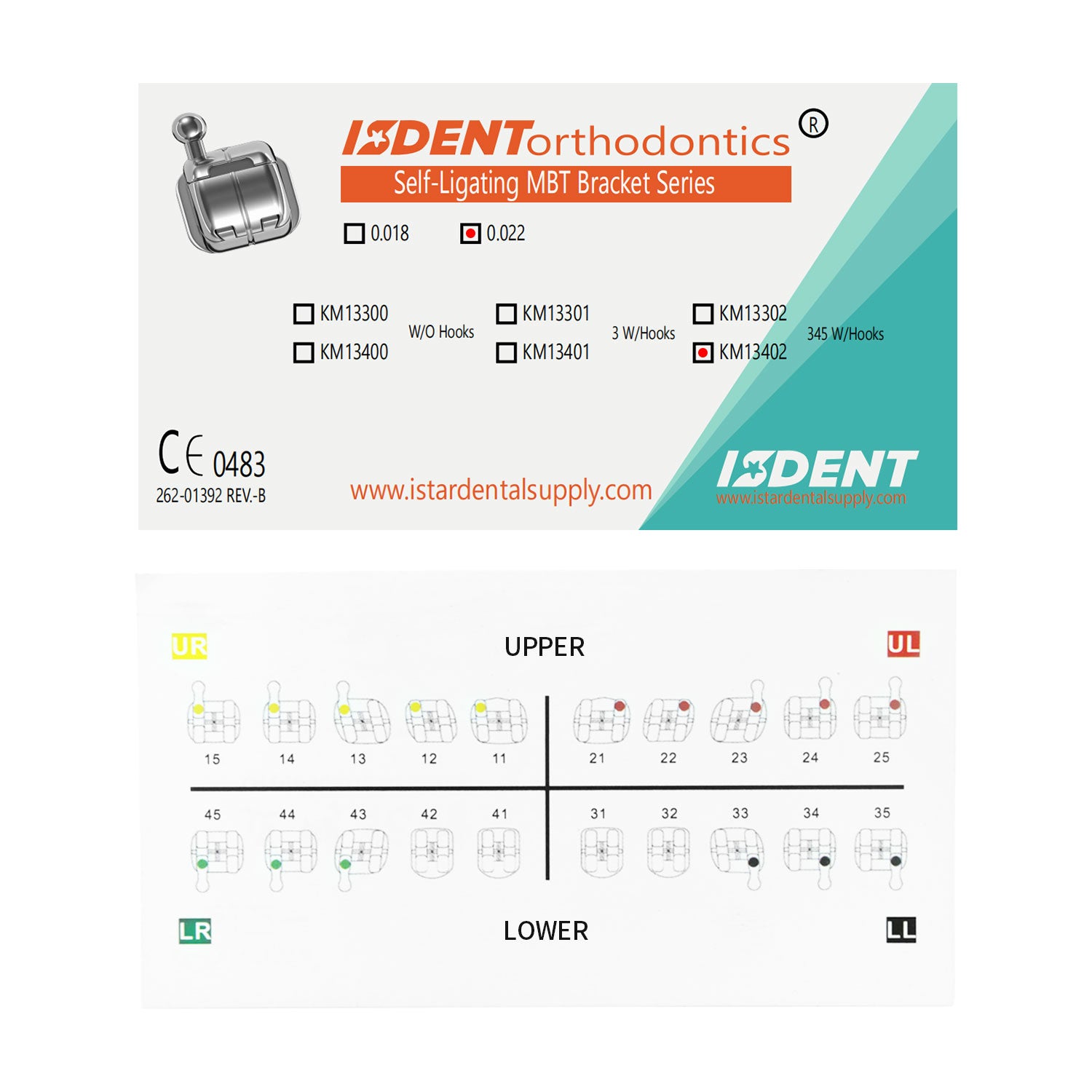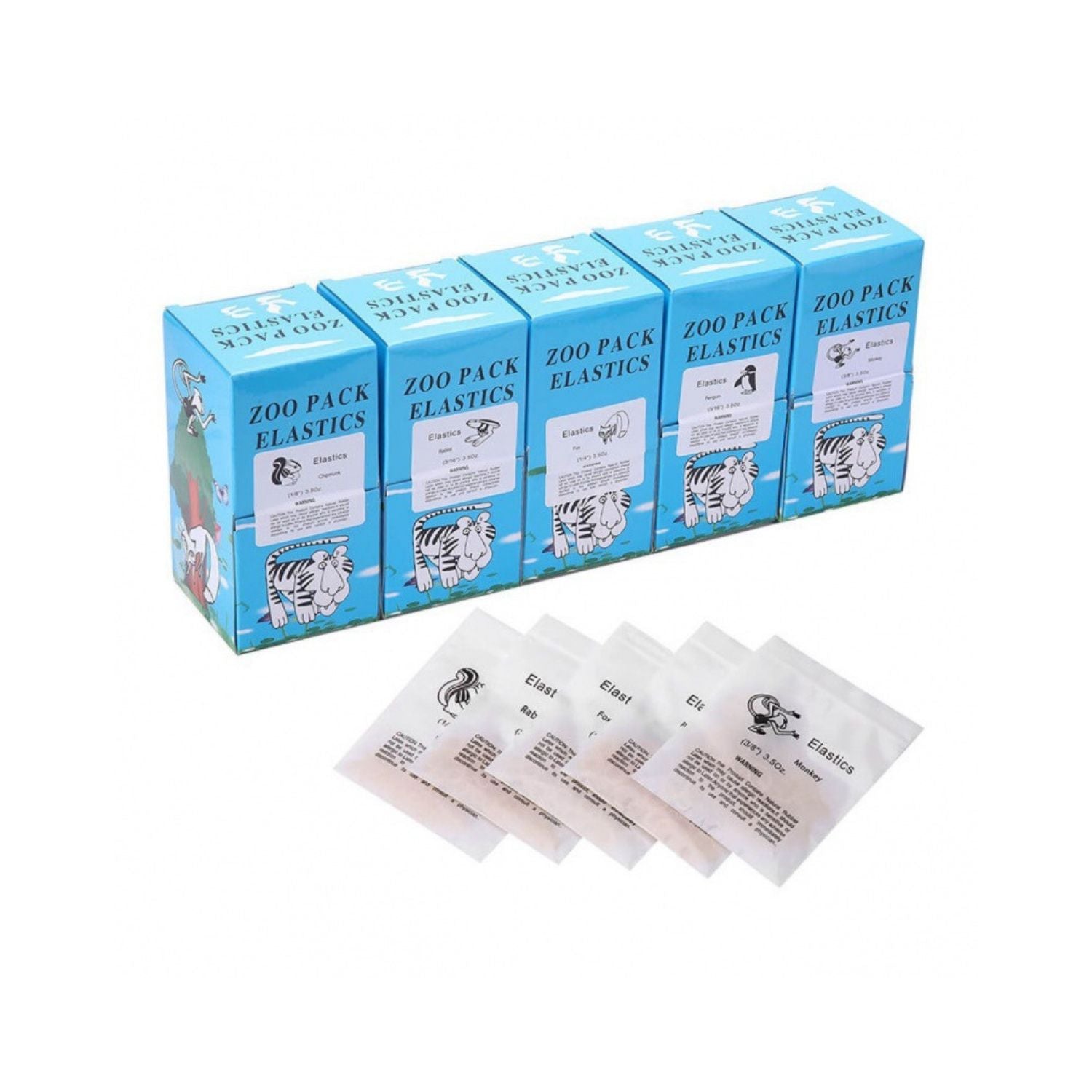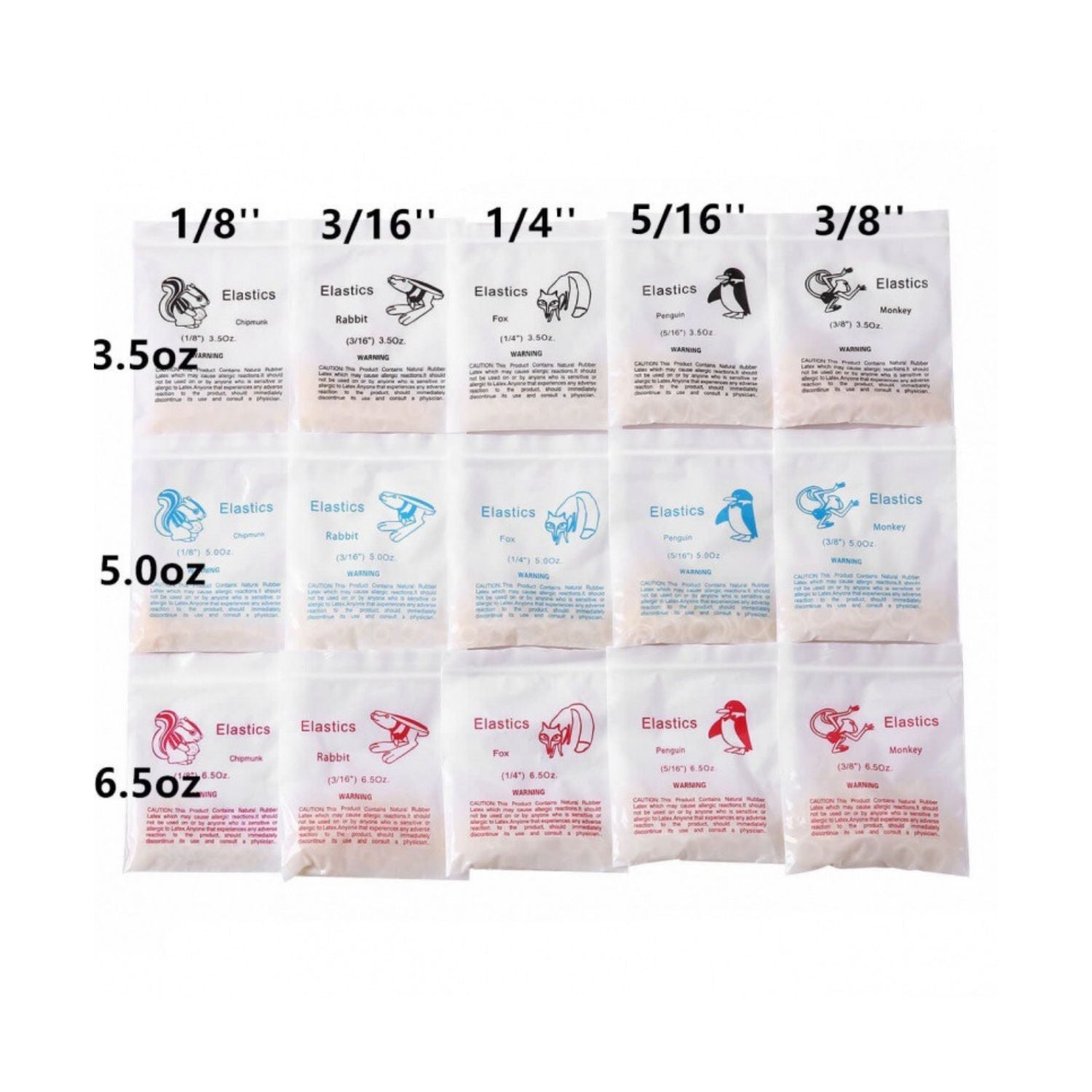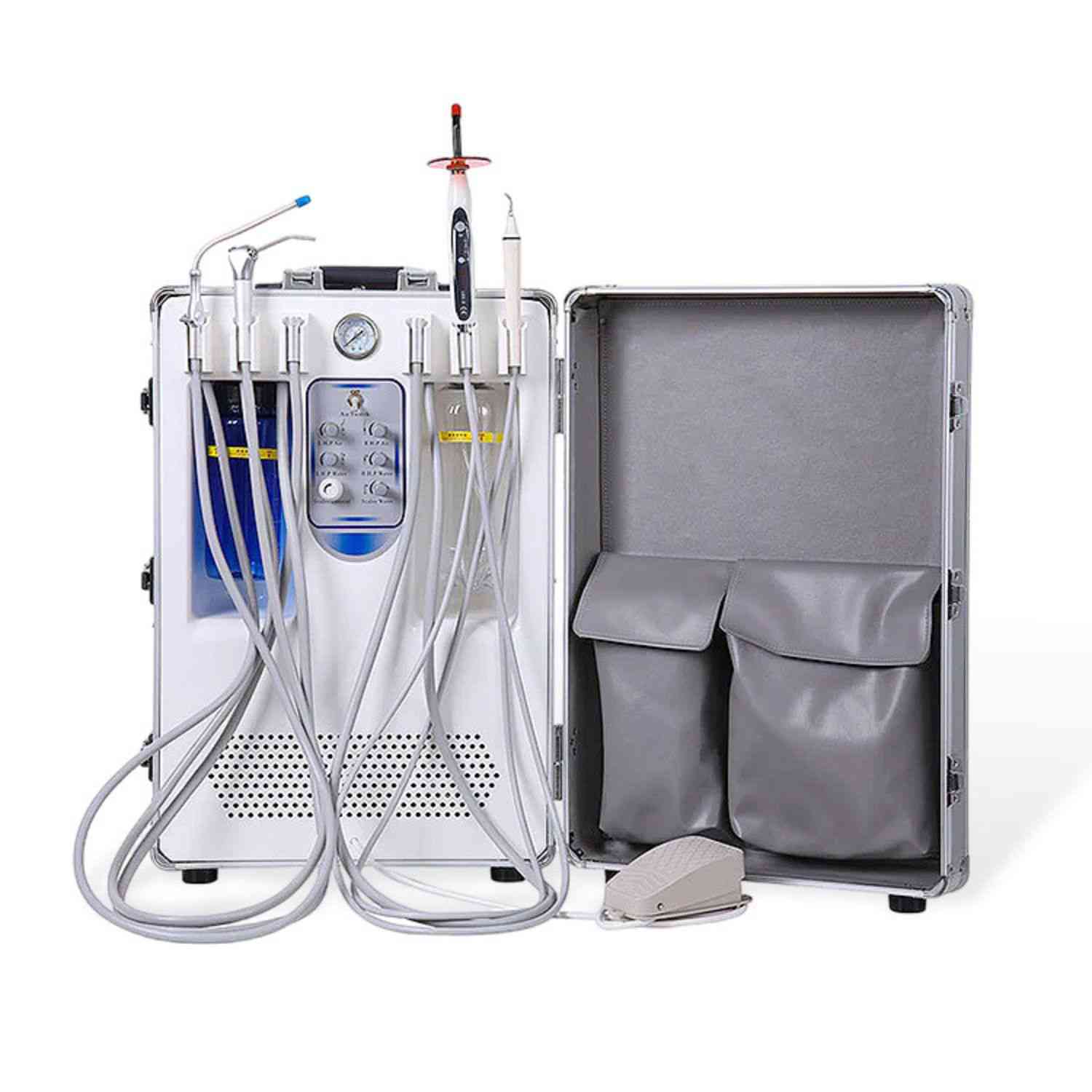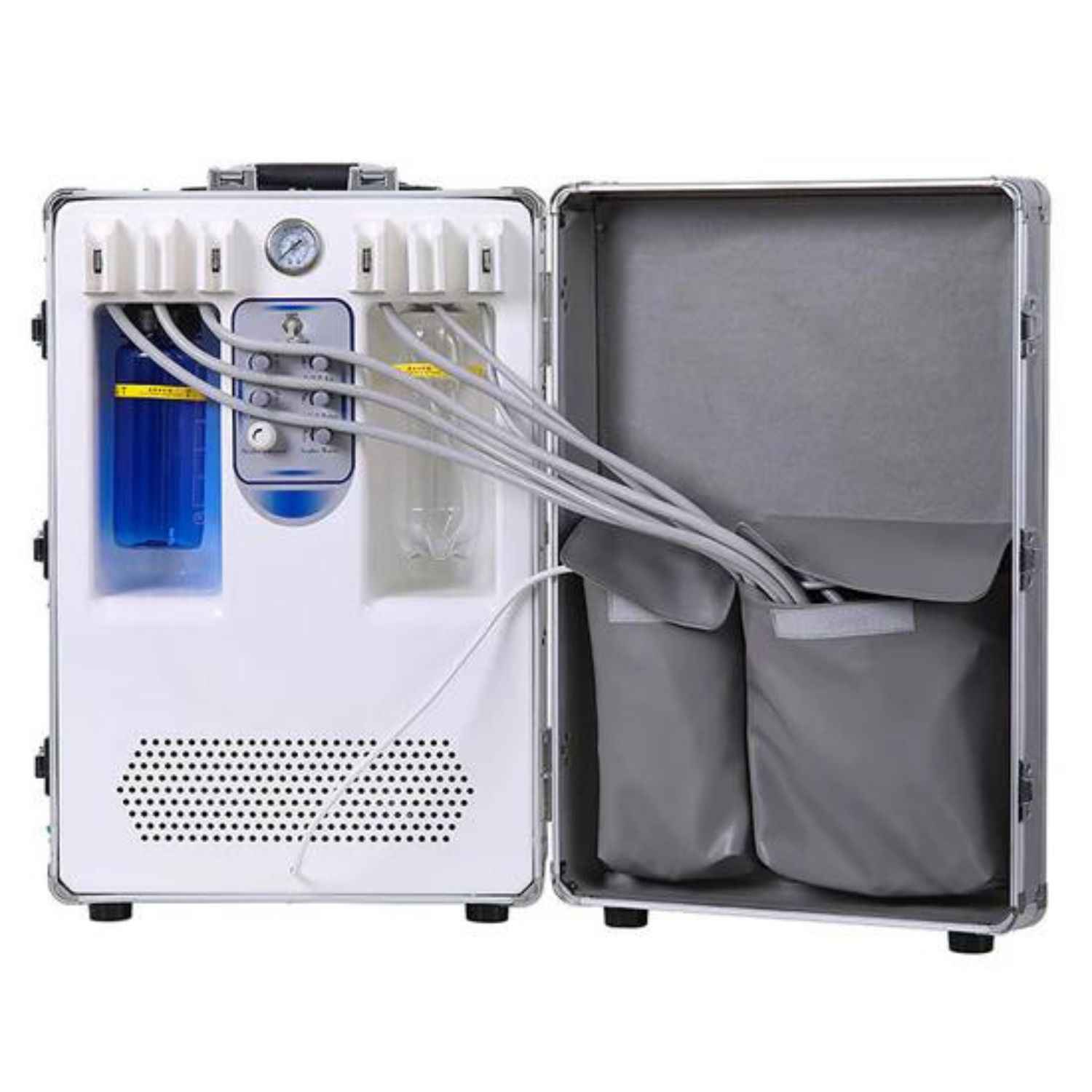Braces wax, also known as orthodontic wax or dental wax, is one of the commonly used tools in orthodontic treatment. It is used during the early stages of orthodontics to reduce the discomfort caused by friction between the braces and the mouth.
Introduction To Wax For Braces
· What Is Dental Wax Made Of
Braces wax is generally made from paraffin, beeswax, or carnauba wax. Some brands, in order to reduce discomfort when the wax is in the mouth, also add flavorings such as mint, cherry, or other fruity flavors.
· Types Of Bracket Wax
- Unscented braces wax: This type of wax is more suitable for individuals who don’t have specific preferences for wax or those who are more sensitive.
- Flavored braces wax: This wax is ideal for those who seek more comfort and a pleasant sensation in the mouth.
- Silicone wax for braces: This wax is suitable for patients whose mouths tend to stay moist and who need the wax to remain on their braces for a longer duration.
· Best Orthodontic Wax
When choosing the best braces wax you should have to consider a variety of factors to make your selection, taking into account the material, experience, value for money, brand and so on, so you can try to consider shopping for the right braces wax for you at Istar, which has a high quality composition of materials and a variety of suitable flavours for you to choose from.

Why Use Braces Wax?
· Orthodontic Wax Benefits
- Reduce Oral Discomfort: Braces wax can alleviate discomfort caused by the friction between braces, brackets, or wires and the inner lining of the mouth, especially during the initial stage of orthodontic treatment, helping patients adapt more quickly to their braces.
- Prevent Mouth Ulcers: Continuous friction may lead to mouth ulcers, and braces wax forms a protective layer at the points of contact, effectively preventing this issue.
- Protect Soft Tissue: Braces wax helps protect the soft tissues inside the mouth, such as gums and the inner cheeks, preventing them from being scratched by sharp brackets or wires.
- Adapt to Teeth Adjustments: After tightening braces or changing brackets, the mouth may need to adjust. Braces wax helps alleviate discomfort during this transitional period.
- Prevent Orthodontic Device Damage: Braces wax also provides a layer of protection for orthodontic devices, preventing surface wear or loosening.
How To Put Wax On Braces
· How To Apply Orthodontic Wax To Braces
Step 1: Clean Your Mouth
Before using orthodontic wax, it’s important to clean your mouth to remove any food particles. In addition to regular brushing,
Step 2: Prepare the Braces Wax
- Take an appropriate amount of wax: It’s generally recommended to take a piece about the size of a green pea, not too much or too little, to ensure effectiveness.
- Form a wax ball: Roll the taken wax between your fingers to form a small ball.
Step 3: Apply the Braces Wax
- Find the correct area to apply: Examine your braces and identify the areas that are most likely to rub or irritate the inside of your mouth, such as the edges of the brackets or the ends of the wires.
- Apply the braces wax: Using your thumb and index finger, gently pinch the wax ball and, with the help of a mirror, press the wax onto the areas of the braces that need protection.
- Adjust and secure: Gently press the wax so it fits closely to the braces.
Duration and Maintenance
· How Long Does Dental Wax Last?
The duration that braces wax lasts can range from a few hours to a day, depending on how you wear it and your daily activities. If the wax becomes loose or uncomfortable, it should be replaced immediately. It is recommended to change the wax at least once a day, rather than using it for extended periods, as this may not be beneficial for your oral health.
· How Often Should Dental Wax For Braces Be Replaced?
You can replace the braces wax based on your individual situation. It is recommended to change it in the following three situations: after eating, before brushing your teeth, or if the wax becomes loose or falls off. At the very least, you should replace it once a day.
· Duration Of Use Of Braces Wax
Braces wax is used when you experience discomfort in your mouth. Generally, it’s used during the first few weeks of treatment. However, if discomfort persists after the initial period, it may still be necessary to continue using the wax. If the discomfort is too severe even after using the wax, you should consult your orthodontist for assistance instead of continuing to use it. After any adjustments to your braces, you can continue using the wax to help you adapt to the new setup.

Safety And Hygiene
· Is Orthodontic Wax Safe To Swallow?
Yes, braces wax is safe to swallow as its materials are food-grade. However, to avoid any discomfort from swallowing it, it’s recommended that you try to avoid swallowing the wax whenever possible.
· Is Braces Wax Reusable?
You should not reuse braces wax, as it can accumulate bacteria over time due to saliva, eating, and other factors.
It's important to replace the wax regularly, and each time you use it, apply fresh wax to ensure hygiene and effectiveness.
· Does Wax For Braces Come Off?
Yes, braces wax can come off to some extent due to activities like eating, drinking, and speaking. This is inevitable and a normal part of its usage.
· Does Braces Wax Expire
Yes, braces wax does have a shelf life. If stored properly, it can last up to ten years. However, over time, it may become hard and difficult to use.
It’s important to store the wax properly and ensure the lid is tightly closed to maintain its softness and usability.
Braces Wax Alternative And Buying Options
· What To Use Instead Of Wax For Braces?
If you don't have braces wax, you can consider using the following alternatives, which can provide similar relief:
- Lip Balm: Lip balm typically contains moisturizing ingredients and can form a protective layer, reducing discomfort.
- Vaseline: Vaseline has lubricating and protective properties and can temporarily replace braces wax. However, it is not designed for oral use, so it shouldn’t be used for extended periods.
- Oral Spray: Some oral sprays contain soothing ingredients that may help relieve discomfort. Be sure to read the instructions and understand the ingredients before use.
- Sugar-Free Gum: After softening the gum, you can place it on the areas causing discomfort, providing temporary relief.
- Mouth Guard: If you have a mouth guard available, you can use it as a temporary solution.
These alternatives can help manage discomfort until you can replace the braces wax.
· Where To Buy Orthodontic Wax?
Offline Options:
- Dentist: Typically, when you start orthodontic treatment, your dentist may provide you with some braces wax during the early stages. If not, you can ask your dentist for it.
- Pharmacies/Dental Supply Stores: If you're running low on wax and need some urgently, you can visit a nearby pharmacy or dental supply store to see if they have braces wax available.
- Large Supermarkets: Large stores like Walmart often have a dedicated section for dental supplies. You can ask the staff to help you find braces wax.
Online Options:
- Online Retailers: You can buy your favourite braces wax from Alibaba or Shopify via your mobile phone or computer, and there may be a wider selection online.
· Is Flavored Braces Wax Available?
Yes, braces wax is also available in different flavors. Common options include mint, fruit flavors, and more.
The functionality of flavored braces wax is the same as that of the regular, unflavored wax—it helps reduce discomfort and protect the oral tissues from the braces.

Common Issues With Braces Wax And How To Solve Them
Common Issues:
- Loss of braces wax
Braces wax can soften or fall off after prolonged natural use, such as talking and eating.
- Food residues may be retained
Braces wax has a high viscosity, so when eating, food residues are likely to adhere to the wax, which will breed bacteria over time.
- Mouth discomfort
Wearing braces for a long time will hinder the normal secretion of saliva in the mouth, which will lead to dry mouth and other symptoms.
- Displacement of orthodontic appliances
Due to the high viscosity of braces wax, it may exert extra force on some orthodontic appliances, which may cause the appliances to fall off or shift.
Solution:
- Replace the braces wax in time
It is recommended to change the braces wax once a day to keep it useful
- Keep your mouth clean
Clean the inside of your mouth with toothbrush or mouthwash to reduce food debris left on the wax.
- Regular check-ups
During orthodontic treatment, regular follow-ups allow your dentist to assess the effectiveness of your treatment and adjust the plan, and you should give timely feedback to your dentist if there is any shifting of the wax.
- Correct treatment of braces wax residue
If braces wax is still attached to your teeth, use a toothbrush or mouthwash to clean it up, and apply some medication to relieve the deeper wax marks.
Can You Sleep With Wax On Your Braces?
It is safe. Braces wax is a non-toxic, tasteless, and safe product. Even if you accidentally swallow it, nothing harmful will happen.
However, for the sake of your dental health, it's recommended that you brush your teeth before applying the wax at night. This helps prevent bacteria buildup and keeps your oral hygiene in check.
Other Precautions When Using Braces Wax
· Can I Use Bracket Wax As A Filling?
No, braces wax cannot be used as a filling. While it can be applied to braces or sharp areas to alleviate discomfort caused by friction, it is soft and lacks sufficient adhesive properties to act as a proper filling.
If your teeth need a filling, you should consult your dentist to get a professional filling material for proper repair.
· What Does Braces Wax Usually Taste Like?
To ensure patient safety and comfort, braces wax is usually flavorless. However, to enhance the user experience, some varieties are available with fruity or floral scents.
It's important to note, though, that braces wax is not intended for consumption, so it's best to avoid tasting it.
· Can You Eat And Drink Normally After Your Braces Are Waxed?
Yes, after applying wax to your braces, normal eating is allowed. However, it’s best to avoid sticky or hard foods, as well as very hot foods, to prevent the wax from potentially coming off.
· Can You Use Orthodontic Wax For Clear Aligners?
Yes, braces wax can be used on both traditional braces and clear aligners. However, before using it, it's important to confirm with your orthodontist that the wax will not interfere with the alignment or fit of your braces or aligners. Additionally, be sure to remove the wax before eating and cleaning your braces.

· How To Remove Wax From Braces
Step 1: Wash Your Hands
Before cleaning the braces wax, make sure to wash your hands thoroughly to avoid contaminating the braces.
Step 2: Use a Toothpick or Dental Floss
Gently use a toothpick or dental floss to carefully remove the wax from your braces, piece by piece.
Step 3: Rinse with Warm Water
Rinse your mouth with warm water to help remove any remaining wax residue.
Step 4: Brush Your Teeth
To ensure the wax is fully removed, brush your teeth again. Be careful to apply gentle pressure while brushing to avoid damaging your braces.
· Can I Brush My Teeth With Wax On My Braces?
It’s not recommended to brush your teeth with orthodontic wax still on your braces, as brushing will likely remove the wax.
This not only reduces the effectiveness of your oral cleaning but also diminishes the protective benefits of the wax. It’s better to remove the wax before brushing your teeth.
· The Do’s & Don’ts of Braces Wax
Do’s:
- Maintain Oral Hygiene: Before applying braces wax, clean your mouth to ensure there are no food particles or plaque that could interfere with the wax’s effectiveness.
- Use Wax in Moderation: Roll a small piece of dental wax until soft, then apply it precisely to the areas that need relief from discomfort.
- Change Wax Regularly: After eating or brushing, remove the old wax and apply a fresh piece as needed.
- Carry Spare Wax: Keep some wax with you when you go out, in case you experience discomfort while away from home.
- Consult Your Orthodontist: If a part of your braces consistently causes discomfort, in addition to using wax, contact your orthodontist for professional adjustments.
Don’ts:
- Avoid Reusing the Same Wax: Replace your dental wax regularly to prevent bacterial growth.
- Do Not Use Wax While Eating: Always remove the wax before eating to avoid it being displaced or accidentally swallowed.
- Do Not Overuse Wax: Apply just the right amount—using too much may cause the wax to fall off or affect the fit of your braces.
- Don’t Ignore Pain Signals: If the wax doesn’t relieve your discomfort or if problems with your braces persist, seek help from your orthodontist immediately.
- Avoid Swallowing Wax: While orthodontic wax is safe, it’s best to avoid swallowing it whenever possible.

FAQ
· Is Dental Wax The Same As Orthodontic Wax?
No, these two concepts are not the same, dental wax it is a large category, which contains abutment waxes, blended waxes, etc. Orthodontic wax is just one of the branches within dental wax.
· What Are the Problems With Braces Wax That I Need To See My Dentist About?
You should seek help from your dentist when you experience any of the following conditions
- Persistent pain in the mouth
If you still have redness, swelling and ulcers on the inside of your mouth after applying the wax, it means that you are not using the wax in the right way or there is a problem with the appliance, and you should seek professional help from your dentist at this time.
- Frequent loss or displacement of braces wax
When this happens to your braces, there is a high risk of accidental swallowing, which may lead to choking. Once you find that your braces wax comes off frequently, you should ask your dentist about the correct way to use the wax.
- Displacement of orthodontic instruments
Due to the high viscosity of braces wax, it may exert extra force on some orthodontic appliances, which may cause the appliances to fall off or shift.
- Allergy
Although braces wax is made of safe and non-toxic materials, some patients may be allergic to some of the components, such as redness, swelling, itching, etc., they should consult their dentist in time.

· What Should I Do if the Braces Wax Doesn't Work?
If and when your braces wax doesn't work, you can go through the following avenues to seek the right solution for you.
- Check if you are using it correctly
Ensure that you are able to apply the braces wax correctly by going through the steps, such as watching online tutorials or the way your doctor taught you to apply the wax.
- Change the type or brand
You can buy more brands or types of braces wax, by using different types of braces wax you can find the one that suits you best.
- Adjust your braces
If the pain is still not reduced after you have used the braces wax, you need to go and get feedback from your dentist to check if it is the tightness or the position of the braces to make sure that it is not causing too much irritation.
- Check oral hygiene and maintain
Enhance your oral hygiene to minimise the production of bacteria and discomfort in your mouth.
- Consult your dentist
If none of the above methods can solve your problem, you should promptly feedback your problem to your dentist for a more professional solution.
· Why Does Braces Wax Not Work?
There may be various reasons why braces wax does not work, and the following are speculated reasons:
- Improper storage of braces wax
Braces wax should be kept in a cool and dry place, avoiding high temperature and humid environment. If it is not stored properly, the wax may deteriorate or melt, which in turn will affect its effect.
- Improper use
If the braces wax is not used correctly, it will also affect the effect of braces wax, so you should follow the correct use method.
- Incompatibility between braces wax and oral environment
Each person's mouth is unique, including the humidity, temperature, acidity and alkalinity of the mouth, if your braces wax is not compatible with your oral environment, the braces wax will not be able to play its role.
- Quality of braces wax
If the quality of the braces wax you buy is not good, it may not be able to achieve the expected treatment effect.
- Type or position of braces
Different types of braces and the position of the braces in the mouth will affect the effectiveness of the braces wax. Certain special positions, such as the back teeth, may be more difficult to apply the braces wax to this position.
· Can Wax Get Stuck in Your Braces?
Yes, braces can sometimes get stuck in braces, for example, when you use too much wax or apply too much force, the wax can get stuck in the brackets or archwires, so in order to avoid this you should pay attention to how you use it or how hard you use it.

· Can I Use Too Much Wax On My Braces?
No, it is not recommended that you use too much braces wax on your braces as it may affect your application, cause the braces to fall off or shift, and may cause you to swallow some of the wax.
· How Do I Stop My Braces Wire From Poking With Wax?
First, you should check if you are using the braces wax correctly. Next, make sure you choose the right type of wax for yourself. If you still experience discomfort from the wax, you should promptly consult your dentist to ensure the braces are properly installed. Additionally, try to avoid using sharp objects to touch the wax and refrain from consuming spicy or irritating foods.
· Does Wax on Braces Melt?
No, under normal usage, braces wax does not melt. However, if you consume food or drinks that are too hot, the wax may melt. Therefore, it is important to avoid placing the wax in high-temperature areas to prevent it from melting.
· Does Orthodontic Wax Dissolve?
No, under normal use, braces wax will not melt. However, if you consume food or drinks that are too hot, the wax might melt. Therefore, it's important to be mindful of this issue and avoid exposing the wax to high temperatures, both in your mouth and in storage, to prevent it from melting.l
· Is Orthodontic Wax Gluten Free?
Yes, most orthodontic waxes are gluten-free. They are typically made from natural or synthetic wax-based materials, and manufacturers often consider individuals with special dietary needs, such as those with celiac disease or gluten intolerance. However, to be sure, it is recommended to carefully check the product's label or ask the supplier to confirm that the product is gluten-free.


